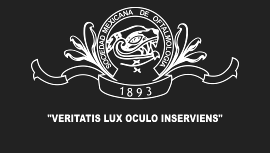Optic neuropathy after laser in situ keratomileusis
Luis M. Quintana-Hernández, Cornea and Refractive Surgery Service, Asociación Para Evitar la Ceguera en México, I.A.P., Mexico city, Mexico
Cristal Manzanillo-Rosario, Cornea and Refractive Surgery Service, Asociación Para Evitar la Ceguera en México, I.A.P., Mexico city, Mexico
Maria F. Golzarri, Cornea and Refractive Surgery Service, Asociación Para Evitar la Ceguera en México, I.A.P., Mexico city, Mexico
Ana M. García-Albisua, Cornea and Refractive Surgery Service, Asociación Para Evitar la Ceguera en México, I.A.P., Mexico city, Mexico
Guillermo De Wit-Carter, Cornea and Refractive Surgery Service, Asociación Para Evitar la Ceguera en México, I.A.P., Mexico city, Mexico
A 38-year-old female, unremarkable medical history and examination either systemic or ophthalmologic, who developed acute visual loss following Laser in situ Keratomileusis (LASIK). She noticed a central scotoma in her right eye 15 days after LASIK was performed; an uncomplicated LASIK was performed. Her best corrected visual acuity was 20/200 OD and the Intraocular pressure (IOP) was 10 mmHg; there was a relative afferent pupillary defect in the right eye and pale temporal optic nerve. This complication related with LASIK has been attributed to ischemia or barotrauma. The increase in IOP during LASIK has been associated with multiple posterior segment complications; however, there are scarce literature reports regarding optic neuropathy damage post LASIK.
Palabras clave: Optic neuropathy. Laser in situ keratomileusis. Complication.




